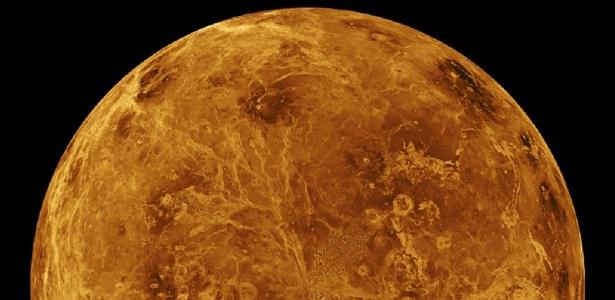Venus – the second closest planet to the Sun – is shrouded in mystery, and part of these questions have led scientists to call it Earth’s “evil twin”.
The association of “brotherhood” between the two planets is due to the fact that Earth and Venus emerged from the same material in the solar system – like an egg that splits into two parts, in addition to the similarity of sizes and density.
While Earth has a diameter of 12,742 km, Venus has a diameter of 12,104 km. Information from a site specializing in space science and from NASA.
And why “evil”?
Unlike Earth, Venus is a planet inhospitable to humans – and any life as we know it.
Its 24-kilometer-thick atmosphere is made of carbon dioxide, with clouds of sulfuric acid, causing runaway global warming.
This scenario results in very hot temperatures. On the surface of Venus, thermometers can reach 480 degrees Celsius – hot enough to melt even lead.
A study published in 2021 in the journal Nature indicated that Venus never had oceans, contrary to perspectives even then.
“It’s a crazy place but a very interesting one,” said Laurie Glaze, NASA’s director of planetary sciences.
The US space agency posted a video on YouTube explaining these reasons. Check it out (in English):
Three missions to Venus in the next decade
To learn more about the neighboring planet – and find out why and how our planet is so different from it – at least three space missions are expected over the next 10 years.
“We really want to understand why Venus and Earth are so different,” Glaze said.
They will be led by NASA and the European Space Agency (ESA), as well as cooperation with space companies from other countries.
First, a spacecraft will pass by Venus. The goal is to capture data about the planet’s clouds and terrain, to serve as a sort of communications hub for the mission.
In the next step, a special probe will descend through the planet’s thick atmosphere and collect data as it travels through the hazardous environment.
For this second mission, NASA’s plan is to send an orbiter (a spacecraft that stays in orbit) from the aging Space Shuttle program.
The last time the agency sent such a device to visit Venus was in the 1990s.
The proposal is to map the history of Venus through its rocky activities, including volcanism. It will also check if the planet has water.
The Italian Space Agency (ASI), the German Aerospace Center (DLR), and the French Space Agency (CNES) will contribute.
The third and final mission scheduled for the next 10 years – more specifically, in the early 2030s – is the European Space Agency’s EnVision, with support from NASA.
The researchers intend to study the planet’s hostile atmosphere and inner core.
The goal is to find out how two planets in the same part of the solar system with the same material can form, but produce very different realities.

“Incurable thinker. Food aficionado. Subtly charming alcohol scholar. Pop culture advocate.”

![[VÍDEO] Elton John’s final show in the UK has the crowd moving](https://www.tupi.fm/wp-content/uploads/2023/06/Elton-John-1-690x600.jpg)




More Stories
What ChatGPT knows about you is scary
The return of NFT? Champions Tactics is released by Ubisoft
What does Meta want from the “blue circle AI” in WhatsApp chats?